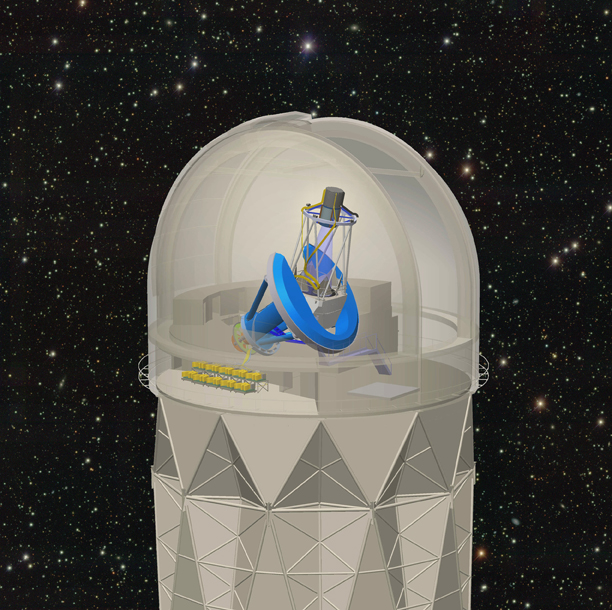A three-dimensional map of the Universe, reaching deeper in space and time than any yet made, is to be produced by an international team of 200 scientists, including leading astronomers from the UK.
The high resolution map will be produced using the Dark Energy Spectroscopic Instrument (DESI), an apparatus that will observe the light from more than 30 million distant galaxies.
A collaboration of UK physicists and astronomers, including groups at the Universities of Portsmouth and Durham and University College London, will be working on the instrument, which is designed to improve our understanding of the mysterious ‘dark energy’, and how it affects the expansion history of the Universe. It will also measure the velocities of hundreds of thousands of stars in the Milky Way galaxy and provide clues about the nature of the equally mysterious dark matter.
The UK Science and Technologies Facilities Council approved funding for UK scientists to play their role in this project last year, and the U.S. Department of Energy has just approved the project’s scientific scope, schedule, and $56M funding profile. The new instrument will start taking data in 2019, and will run for 5 years, reporting its main results in the mid-2020s.
Professor Will Percival, from the University of Portsmouth’s Institute of Cosmology and Gravitation, led the bid for the UK to take part in this project.
He said: “Since the discovery that the expansion of the Universe is accelerating, astrophysicists have been trying to understand the physical process driving the acceleration. They cannot do this using known physical laws and materials. “
“DESI will enable an awesome experiment: the results will be a factor of ten better than we have at the moment. They will revolutionise our understanding of the Universe.”
DESI will be mounted on the four metre Mayall telescope at Kitt Peak National Observatory near Tucson, Arizona. The Mayall telescope’s moving weight is 375 tonnes so it can easily support the weight of DESI, which is five tonnes. The telescope’s top end will be replaced with DESI’s optical corrector and focal-plane system, whose design is being coordinated in the UK as part of the UK contribution to the project.
More details and images can be found here

